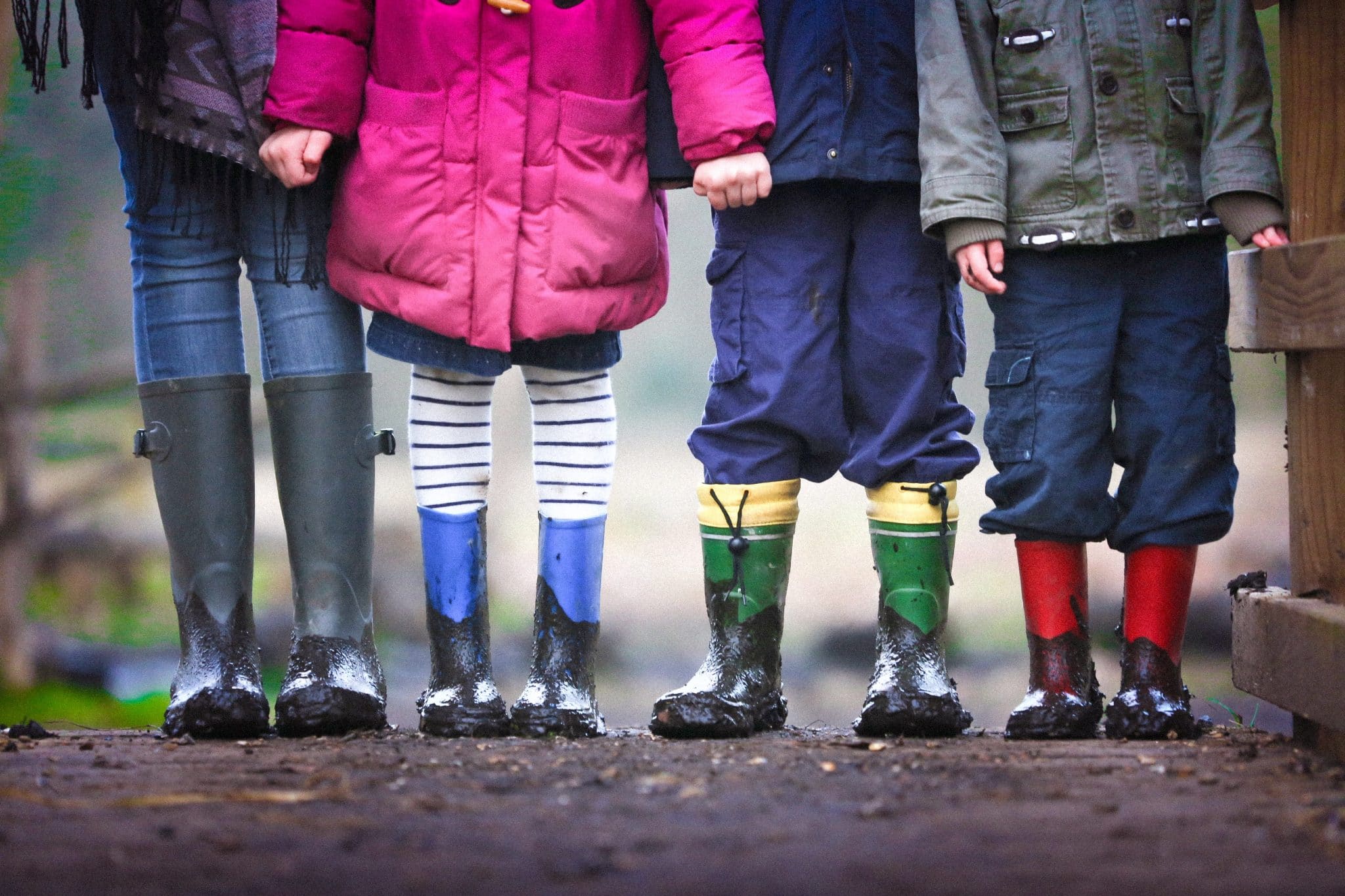The China Children’s Development Program Outline (2011-2020) was published in 2011 to promote the development of children. Recently, the National Bureau of Statistics conducted its final assessment of the implementation of the Outline in five areas: health, education, welfare, the environment, and legal protection.
The result shows that the main objectives of the Outline have been achieved. Children’s health, education, public welfare, social environment for growth and development, and legal and institutional mechanisms for protecting children have all been steadily improved. However, the gap between urban and rural areas is obvious, and more attention still needs to be given to children’s rights and interests.
- Children’s Health
Since the implementation of the Outline, children’s medical and healthcare services have been comprehensively improved. Prevention and treatment of birth defects has markedly improved, and the child mortality rate has continued to decline. The incidence of severe birth defects dropped from 17.47 per 10,000 in 2010 to 10.4 per 10,000 in 2020, a drop of more than 40 percent. The mortality rate of infants and children under five has now been declining for seven consecutive years.
The overall immunization monitoring and management system has been gradually enhanced. A three-level vaccination service network has been established at the county, township and village level. Vaccination rates remain high. Major infectious diseases affecting children have been effectively controlled. In 2020, the vaccination rate for school-age children approached 99 percent, and the incidence of measles and Japanese encephalitis dropped to 0.06 per 100,000 and 0.02 per 100,000 respectively. The national incidence of neonatal tetanus continues to remain below 1 per thousand, with the goal of eliminating neonatal tetanus achieved in 2012.
Since 2010, children’s nutrition has continued to improve – especially in poorer areas. In 2020, the national incidence of children born underweight was 3.25 percent, achieving the goal of “below four percent” written in the Outline. The rates of anemia, growth retardation and low body weight in children under five years old were 4.51 percent, 0.99 percent and 1.19 percent, which were 0.87 percent, 0.13 percent and 0.36 percent lower than the data in 2010; and all reached the given targets in the Outline of being below 12 percent, 7 percent and 5 percent.
The child injury prevention network has been continuously improved, and the mortality rate from child injuries has dropped significantly. The injury mortality rate of children under the age of 18 declined from 22.41 per 100,000 in 2010 to 11.06 per 100,000 in 2020, achieving the target set in the Outline.
- Children’s Education
Preschool education has undergone significant development, and a public service system for preschool education has been established. In 2020, the national gross enrolment ratio for pre-school education was 85.2 percent, an increase of 28.6 per cent from 2010, which is far higher than the target of “70 percent” in the Outline. There are 292,000 kindergartens nationwide, of which 124,000 are public kindergartens and 168,000 are private kindergartens — 1.9, 2.6 and 1.6 times greater than in 2010. There were 2.913 million full-time kindergarten teachers nationwide, 2.5 times greater than in 2010.
The reform of nine-year compulsory education has been continuously promoted, and universalization of compulsory education has been realized. Since 2010, the net enrolment ratio of primary school has remained above 99.7 percent, and the ratio of primary school children continuing junior high school education has remained above 98 percent.
In 2020, there were 211,000 primary and junior high schools nationwide; 10.295 million full-time teachers, an increase of 12.6 percent over 2010; and 156 million registered students, an increase of 2.8 percent over 2010. In 2020, 14.297 million migrant children were enrolled in primary or junior high schools, accounting for 9.1 percent of all students in China; the number was 1.5 percent higher than in 2010.
Along with the Outline, the National Medium and Long-term Education Reform and Development Plan Outline (2010-2020) and the Senior High School Education Universalization Plan (2017-2020) were implemented to enhance the scale and quality of senior high school education. In 2020, the national gross enrolment ratio of senior high schools was 91.2 percent, an increase of 8.7 percent from 2010, achieving the goal of reaching 90 percent set out in the Outline. So far, there are 24,457 senior high schools across the country, of which 9,896 are secondary vocational schools. The number of enrolled students in secondary vocational schools and normal senior high schools are 6.447 million and 16.634 million. They accounted for 42.4 percent and 40 percent of all senior high school students in China.
Education opportunities for disabled persons have been continuously expanded. In 2020, there were a total of 2,244 special education schools nationwide with 66,000 full-time teachers, an increase of 31.5 percent and 66.9 percent from 2010. There were 864,000 students in special schools who were at the nine-year compulsory education stage in 2020, 2.1 times higher than that in 2010.
- Children’s Welfare
The number of the child welfare and minor rescue and protection institutions has been increasing since the implementation of the Outline. By the end of 2020, there were a total of 760 child welfare and rescue and protection institutions nationwide, an increase of 280 from the end of 2010; the institutions had 101,000 beds for children, an increase of 45,000 from the end of 2010. In 2020, a total of 31,000 homeless minors were rescued.
After the Outline was published, the “Opinions on Strengthening the Protection of Orphans” issued by the General Office of the State Council were released the same year. Since then, the central government has arranged special funds to subsidize the basic living expenses of orphans in various places, and their living conditions have significantly improved. The number of children being abandoned has dropped significantly, and the number of orphans has been declining for eight consecutive years. In 2020, 11,000 family adoption registrations were processed nationwide, accounting for 5.7 percent of the total number of orphans.
The national rehabilitation assistance policies, work system and service network for disabled children have been fully established, providing a strong guarantee for disabled children to access rehabilitation services. By the end of 2020, there were 10,440 disabled rehabilitation institutions nationwide to serve children with disabilities, an increase of 7,300 from 2011. In 2020, a total of 237,000 disabled children between the ages of nought and six received basic rehabilitation services across the country, an increase of 87,000 over 2016. The ratio of disabled children between the ages of nought and six who received basic rehabilitation services was 2.2 per cent.

- Social Environment for Children
The social environment for children’s growth and development has improved since 2010. In 2020, the average per capita rate of green space in Chinese cities was 14.8 square meters, 3.6 square meters more than in 2010. The ratios of green coverage, urban sewage treatment and the harmless treatment of municipal solid waste in urban areas were 42.1 percent, 97.5 percent, and 99.7 percent, which were 3.5, 15.2, and 21.8 percent higher than in 2010. The proportion of people benefiting from centralized water supply in rural areas reached 88 percent, an increase of 30 percent over 2010.
The construction of urban and rural community service systems has been vigorously promoted, and the “children’s homes” (children’s community centers) established by urban and rural communities have become the “second homes” of many children. By the end of 2020, there were 448,000 community service centers nationwide, which was 7.9 times more than in 2010; in total there were 321,000 children’s homes, 6.7 times more than in 2012. The number of certified professional social workers in community centers and children’s homes was 71,000, which was 7.8 times higher than in 2010.
High-quality cultural products for children have continued to increase. In 2020, 43,000 books for children at junior high school and below were published nationwide, with 209 periodicals for children at junior high school and below also published. There were 150 million volumes of children’s literature in 3,212 public libraries across the country, which was 4.9 times higher than in 2011. The broadcast time of national children’s radio programs, children’s TV programs, and TV animation programs were 288,000 hours, 631,000 hours, and 446,000 hours, which were 2.1, 1.7, and 1.6 times higher than in 2011.
- Legal Protection for Children
The legal system for child protection is now more comprehensive. In addition to the Constitution, the Minor Protection Law, the Law of Prevention of Juvenile Crimes, the Compulsory Education Law, the civil law, criminal law and other general laws have formed a basic legal protection system for children’s rights and interests.
Multiple measures have been taken to fight child trafficking and child abduction. Since the establishment of a platform for publishing the information of missing children in 2016, a total of 4,930 cases have been publicized, and 4,858 children have been successfully recovered, representing a recovery rate of 98 percent.
Legal aid for minors has been actively promoted and the aid application channels have been expanded. In 2020, 120,000 minors across the country received assistance from legal institutions, an increase of 33,000 or 37.7 percent from 2010. In 2020, women’s federations at or above the county level received and dealt with more than 188,000 complaints from women and children.
The number of juvenile delinquencies has continued to decline. In 2020, the number of juvenile delinquencies nationwide was 34,000, a decrease of 50.5 percent from 2010; the proportion of juvenile delinquencies to the total number of delinquencies in the same period was 2.21 percent, a decrease of 4.57 percent from 2010.



